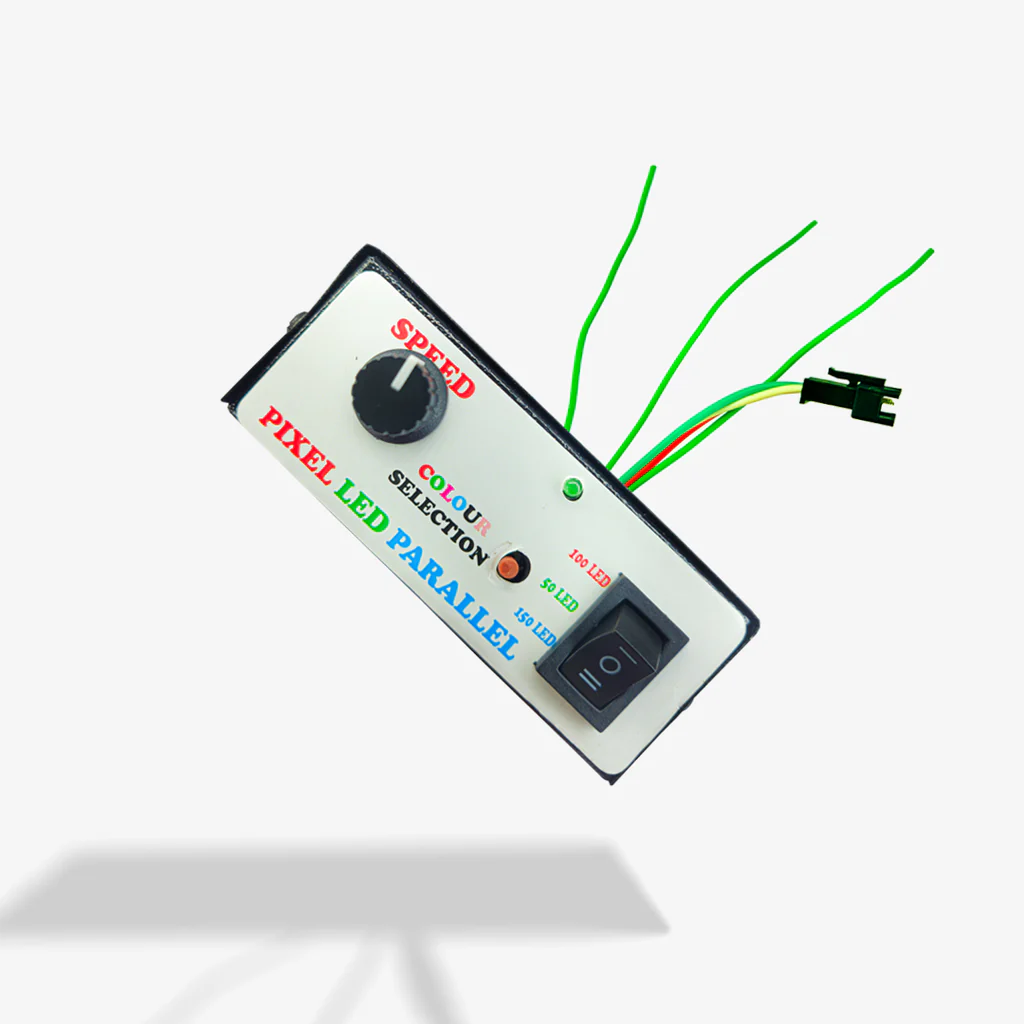Address
TAJPUR, NABATAJPUR, BHGWANPUR, Purba Medinipur, West Bengal, 721601
Work Hours
Monday to Friday: 10AM - 8PM
Weekend: 12AM - 5PM
Address
TAJPUR, NABATAJPUR, BHGWANPUR, Purba Medinipur, West Bengal, 721601
Work Hours
Monday to Friday: 10AM - 8PM
Weekend: 12AM - 5PM

The PIXEL LED MANUAL PARALLEL CONTROLLER is a vital tool in the realm of LED lighting systems, offering precise manual control and efficient management of pixel LED setups. This type of controller is designed for users who seek fine-tuned adjustments in both small and large LED arrays, providing a high level of flexibility and performance. Whether you’re running a commercial display or setting up an artistic light installation, understanding the functionalities of this controller can elevate the quality of your lighting projects.
Pixel LEDs are versatile lighting units that can be controlled individually or as part of a group to create dynamic lighting effects. Each pixel in a Pixel LED system typically includes multiple colored LEDs, most commonly red, green, and blue (RGB), allowing for a full spectrum of colors through color mixing. These LEDs are widely used in digital displays, architectural lighting, and entertainment venues due to their adaptability and vibrant light output.
Pixel LEDs offer unique features such as individual pixel control, enabling users to program complex lighting patterns and animations. Their applications span across numerous industries, from advertising displays to decorative installations and stage lighting for events. The ability to create intricate lighting effects with Pixel LEDs has made them a favorite in both commercial and creative projects.
LED controllers are devices that manage the behavior of LED lights, including brightness, color, and animation sequences. They range from simple dimmers to more advanced units that allow for highly detailed control over each individual light or pixel.
Manual LED controllers, like the PIXEL LED MANUAL PARALLEL CONTROLLER, offer hands-on control, giving users the ability to manually adjust settings in real-time. Automatic controllers, on the other hand, follow pre-programmed patterns and settings. The choice between manual and automatic depends on the level of control needed for the project.
Parallel LED controllers operate by distributing control signals to multiple LED strips or arrays simultaneously. This setup allows for more efficient load management and reduces the risk of voltage drop, which can occur in larger LED setups. A parallel controller, like the PIXEL LED MANUAL PARALLEL CONTROLLER, is particularly useful in projects requiring multiple zones or a large number of LEDs.
The PIXEL LED MANUAL PARALLEL CONTROLLER stands out for its combination of manual precision and parallel processing capabilities, offering several key benefits for LED installations.
Manual control allows for real-time adjustments and experimentation, perfect for projects that require custom lighting designs.
With manual control, users can adjust the color and brightness of individual pixels with pinpoint accuracy. This level of precision is critical in applications like stage lighting, where mood and atmosphere depend on subtle changes in light.
Using a manual controller, lighting designers have the freedom to create and modify animations on the fly. This flexibility is essential for live performances or dynamic advertising displays where the lighting effects need to change frequently.
Parallel controllers are known for their efficient handling of large-scale LED setups.
The PIXEL LED MANUAL PARALLEL CONTROLLER excels at distributing power evenly across multiple LED strips, reducing the likelihood of power imbalances or overloads. This ensures a longer lifespan for both the controller and the LEDs.
Setting up the PIXEL LED MANUAL PARALLEL CONTROLLER is a straightforward process, but it requires careful attention to detail to ensure optimal performance.
Be sure to match the voltage requirements of the LED strips with the controller, and double-check all connections to avoid short circuits or signal loss.
Issues such as flickering lights or uneven brightness can often be traced back to wiring problems or insufficient power. Double-check all connections and ensure that the power supply meets the demands of the LED array.